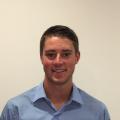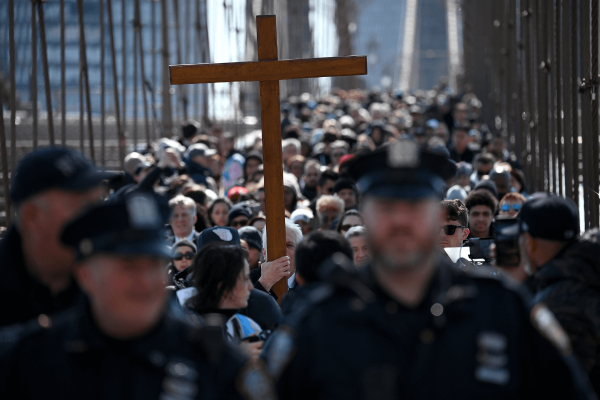It’s the latest report amid #ChurchToo era: Hundreds of pastors and other leaders in Southern Baptist Convention churches sexually abused lay members and a number of them were still allowed to work at churches, even after being accused or convicted. These revelations, most recently documented by the Houston Chronicle and San-Antonio Express-News, have been known by those within the SBC for a while now.
For over a decade, activists have pushed for the creation of a database in the SBC that would list credibly accused predators. They argue that, using such a database, a church’s hiring committee could check candidates against the list, thus preventing some of the shuffling of predators that the SBC and other denominations have seen. The SBC has yet to adopt the idea, however, arguing they can’t exercise authority over local, autonomous churches and make them report abuse. Survivors and activists say that shouldn’t stop the SBC from trying.
After being intensely scrutinized in the wake of allegations of sexual abuse against SBC pastors over the past year, some SBC leaders are vocalizing their hope for change in the convention. Among these hopes is the implementation a database, which President J.D. Greear emphasized in his “10 calls to action” last month.
As many in the SBC eagerly await a decision on a database, Sojourners sought to better understand how databases for other denominations work and more importantly, the impact they have.
Years after being abused by a rabbi at the yeshiva he was attending, Eric Aiken looked up his abuser online and found a litany of other cases connected to the rabbi. He also stumbled upon reports of other Orthodox Jewish rabbis abusing children.
What Aiken discovered was vast, and not nearly centralized enough. So he began compiling a list of convicted sex offenders in the Orthodox Jewish community. With the help of Survivors Network of those Abused By Priests (SNAP) and Bishop Accountability, a website with a registry of Catholic sexual predators, Aiken launched ProtectJewishKids.com. The website, which began four years ago, began with 160 names and now has 800, with Aiken updating it every month.
Databases in other religious communities began similarly. Barbra Graber, a survivor of sexual abuse, started the Mennonite Abuse Prevention (MAP) List after learning that widespread abuse wasn’t being properly addressed among Mennonites, an Anabaptist tradition that includes the Mennonite Church USA and many other faith groups.
She decided, “I’m just going to do it myself,” she said. “When you have something happen to you and you can be a voice for it, there really is no stronger voice.”
These websites only publicly display names of predators who’ve been named in court documents or news stories to ensure legal protection. However, those who maintain the databases privately keep track hundreds of other non-documented stories, through emails they received or speaking with survivors on the phone, spending hours each week on the projects.
Christa Brown maintained a similar website for the Southern Baptist Convention from 2006 to 2012. She knew her scope was limited, however, so she spoke before the SBC executive committee’s bylaws work group in 2007 to ask them to create a database of their own. Her efforts were unsuccessful, as was a motion filed by Oklahoma pastor Wade Burleson that same year.
Brown knew she wouldn’t have been able to assess the non-documented accusations she received. She also would not have been able to communicate that information to the necessary parties. An effort like that requires money, staffing, experts and time, she said.
If the SBC were to establish a database, it would be the first of its kind with denominational support and, potentially, funding. This would allow for the capabilities Brown never had, such as having an independent non-profit, like GRACE (Godly Response to Abuse in the Christian Environment), the Faith Trust Institute, or even an insulated panel of SBC lay members, assess credible accusations.
In addition to notifying churches about predators, an online resource like a database could act as a safe space for survivors to report their cases. This is vital, Brown said, since churches haven’t been a home for victims to tell their stories.
“The main impact that we’re looking for is the personal one,” said Melanie Sakoda, co-founder of Pokrov.org, a database for the Orthodox Christian and Eastern Rite Catholic churches.
Burleson, whose database motion is now being studied by Greear’s Sexual Abuse Presidential Advisory Group since the motion’s re-introduction in 2018, agrees with Sakoda. A database says to a survivor, “You are important. What has happened against you is wrong and we’re going to make sure the person who did this held accountable for the rest of their life,” he said.
The success rate of these type so of databases is difficult to track. It’s hard to tell, for example, how many predators the databases have prevented from moving between different churches or synagogues.
Ultimately, those behind these sites recognize their limits to eliminating abuse in the church. There is no silver bullet. Rather, a multi-pronged approach is needed.
Other efforts can include organizations, such as GRACE, providing training to churches about sexual abuse awareness and how to handle an incident.
As for the SBC, Brown thinks its leaders need to, “interrogate their own theology,” she said.
“This theology of female submissiveness and male headship, from the get-go sets up dynamics that are enabling of abuse and cover ups,” Brown said. But, she adds, “We’re a long way away from seeing any change in this.”
Got something to say about what you're reading? We value your feedback!







